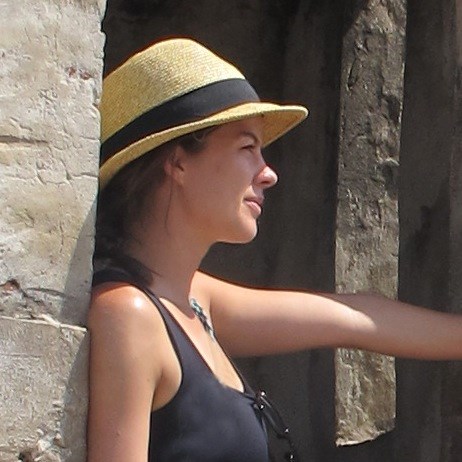MANCHESTER, NH, N.H., March 18, 2015 (GLOBE NEWSWIRE) -- Elizabeth Rush's father, visiting his daughter in Myanmar in 2011, couldn't understand why the young writer and photojournalist so loved a seedy old city like Yangon.
"We were walking down Bank Street past the pensioners' office, which once had been the British Assistant General's headquarters," she said. The building still bore the damage of bombings during World War II, and then the untreated decay of subsequent decades.
And that was just it. As she writes in her new book "Still Lifes from a Vanishing City"—published March 1st by the Things Asian Press—the building was "a poem in architecture, written at the intersection where time meets material."
Or at least that was part of why she felt as she did. Rush had grown up in Massachusetts, and had attended Reed College as an English major, aspiring poet, and enthusiast of avant-garde art. She heard about an arts scene in Hanoi that was flourishing as government censorship relaxed, and in 2006 she landed a job at Vietnam's National University.
But the job had lost its funding by the time Rush arrived in Hanoi. Instead she found work in an art gallery, and also found the subject of the first book she wrote: a ghost-written memoir as related by the extraordinary American expatriate who first brought Hanoi's artists to international attention.
That book was Rush's thesis project in Southern New Hampshire University's low-residency MFA in Fiction and Nonfiction program. "It's a terrific piece of work, especially for its lyricism ," said writer Richard Adams Carey, who was Rush's mentor in the SNHU program. "It displays Elizabeth's ability to not only see the world through another's eyes, but inhabit as well a whole different cultural perspective."
But this story remains in Rush's drawer. "I have a publisher for it, but now the woman has gotten nervous about how the memoir might jeopardize her life in Hanoi," Rush said. "So she's withholding permission—and I'm trying to remain unattached to the outcome."
While Rush was living in that city, however, people encouraged her to visit Yangon. "They said it was like Hanoi had been twenty years ago."
Yangon, formerly Rangoon, had been the capital of what was then Burma during its days as a British colony. "Once the most cosmopolitan of all of Southeast Asia's cities, Yangon is now practically forgotten," Rush writes in this new book. "In the 1920s and '30s Yangon was the second busiest immigration port in the world, trailing only New York City."
Until recently, hardly anyone came to Yangon, and Myanmar, ruled by a military junta, remains the poorest country in Asia. For Rush, that was part of her fascination with the city, and the poetry she saw in the pensioner's office: Yangon's original beauty, and the poignance of its descent from glory.
But there was this as well: the pride and tenacity of its citizenry, and the grace notes these people had bestowed on the homes they kept in these crumbling buildings. "Yangon is the most beautiful city I have ever visited," Rush writes in her new book. "Fragile, ephemeral, tenuous—it epitomizes delicacy and balance."
Ephemeral indeed. Most of Yangon's buildings are state-owned, and over the past three years—as Myanmar transitions from military rule to a parliamentary system—the buildings have been auctioned off to wealthy Burmese or foreign investors. Now, one by one, the colonial-era apartment buildings are being torn down and replaced with high-rise condominiums.
Meanwhile Rush, since her graduation from Southern New Hampshire, has built an impressive portfolio as a journalist—crossing borders with Bangladeshi cattle smugglers, building homes with Lima's squatters, and publishing work in Granta, Orion, Le Monde Diplomatique, Witness, the Huffington Post, Asian Geographic, and many other venues. She was also editor and contributor to "Lost and Found Hanoi," a 2014 coffee-table exploration of that city's hidden corners.
In Yangon, Rush went with a notepad and camera into shop houses and government buildings where lawyers and doctors live side by side with mohinga sellers and jade cutters. Often the first foreigner to visit those neighborhoods, she was graciously welcomed into their residents' homes.
There she recorded—in ghostly, evocative photographs and heartfelt essays—what will be lost with this next wave of colonialism, one fueled more simply by money and consumption. They combine into their own sort of poetry, composed at an intersection outside of time.
Rush, who now teaches at the City University of New York, can't help but be attached to Yangon's outcome, especially as the places she photographed will be destroyed this year. She went into them, she said, "feeling as though I might recover something I have lost here, the truth of my own humanity."
Allied to that truth is the wish we all raise against time: "My hope," she writes, "is that 'Still Lifes from a Vanishing City' will remind us that these moments, these homes, having once existed, will never completely disappear."
Photos accompanying this release are available at:

